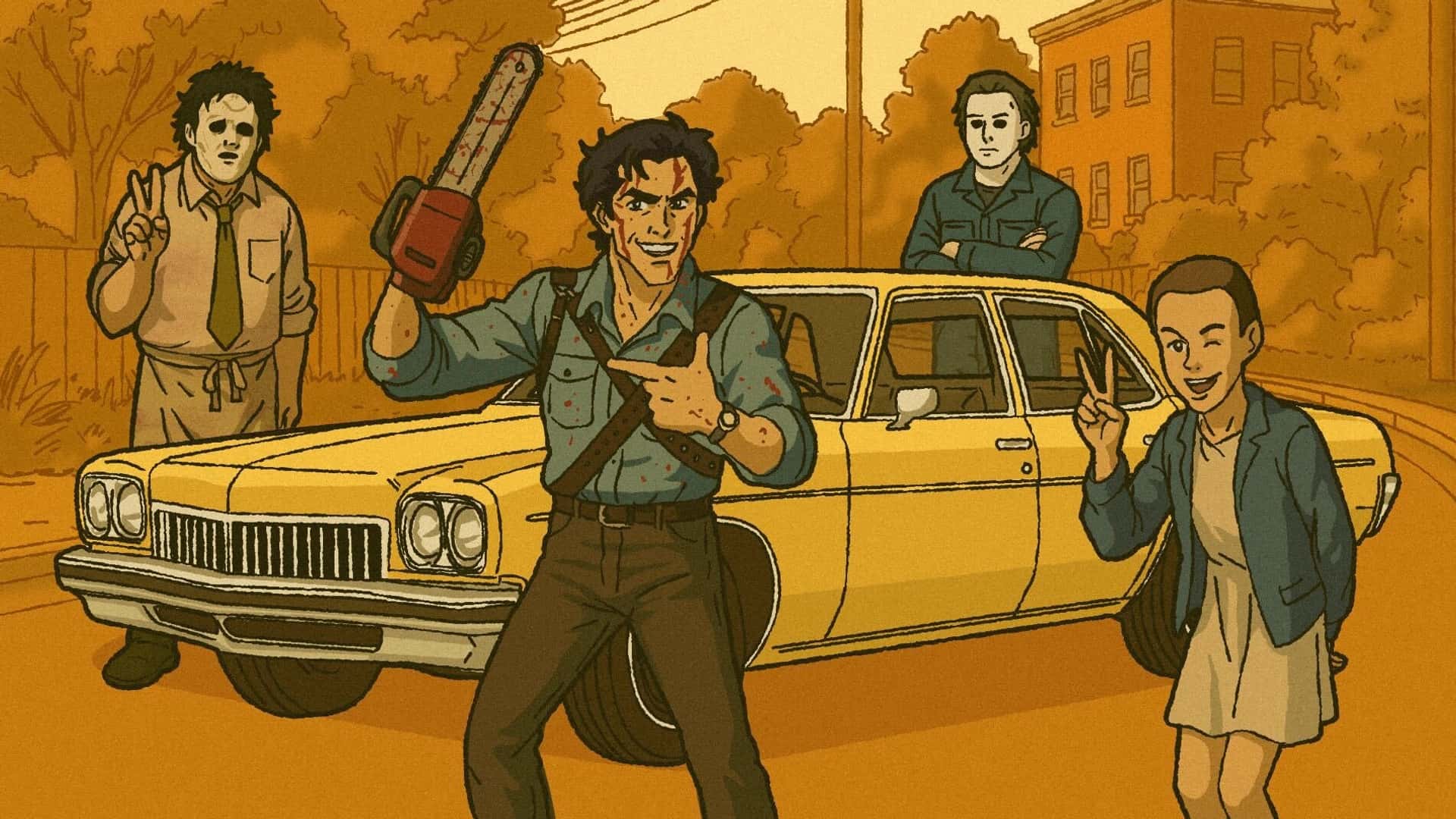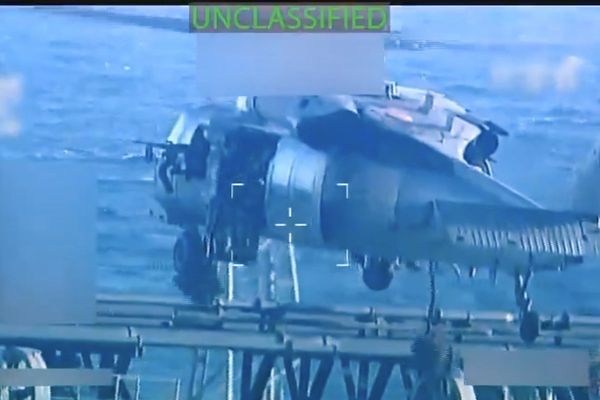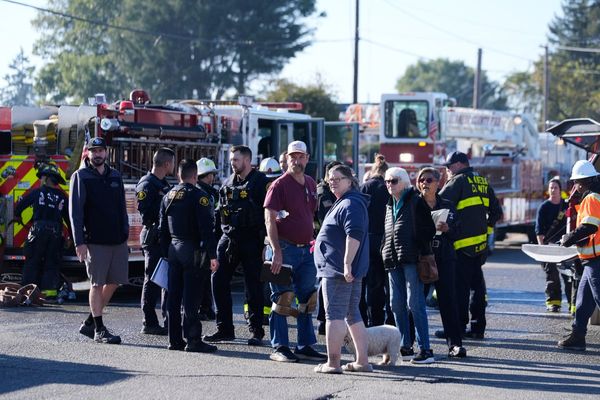
What was the first horror movie that really scared you? I mean truly, genuinely kept you up at night? For me, it was the Texas Chainsaw Massacre remake from 2003. I was 11 or 12, and my cool, older cousin thought it would be a good idea to introduce me to the horrors of Leatherface at a young age. In hindsight, not a great idea.
These days, horror is my comfort genre. Most Fridays, I’ll pop on a movie like Trick ‘r Treat or The Strangers—two of my favorites—as a way to unwind, ironically, from the long week.
Of course, cars play a large role in the horrorscape. Some of the most famous movie cars in history come from horror. The Ghostbusters Ecto-1 is arguably the most popular, followed closely behind by the Mystery Machine from Scooby Doo and Dragula from The Munsters. The list goes on.
But this isn’t about those cars.

This Halloween week, I wanted to take a look at the many Malaise era (and near-Malaise era) vehicles that litter the background of some of our favorite horror flicks—the sheriff’s ratty pickup truck, the oblivious mom’s big-bodied station wagon, or the killer’s anonymous four-door. Although they may not take center stage, these vehicles play an important role in setting the tone of many of these films, and they’re largely ubiquitous across timelines.
For those who don’t know, a quick history lesson on the Malaise era. Centered around the 1973 oil crisis and the Clean Air Act, automakers were forced to scramble to design vehicles that were more efficient as a way to combat shortages and skyrocketing prices. It spawned cars like the Ford Pinto, Buick LeSabre, and AMC Hornet, vehicles that were so underpowered and mediocre that they became infamous. That spawned the "Malaise Era" terminology we use to describe the whole period today.
It should be said that Malaise isn’t the only era of American cars represented in the horror genre. But some of the most popular horror flicks of all time are littered with cars from the 1970s and 1980s, which quickly became the standard for many filmmakers, even in modern horror.
In the original Texas Chainsaw Massacre from 1974, the protagonists pick up a hitchhiker in a faded 1972 Ford Club Wagon van, setting the stage for the horrors yet to come. Even in later iterations of the film and series, directors stuck with a version of the same ratty old American van (a Dodge in the 2003 film), rather than swapping it with something modern like, say, a Honda Odyssey. It just made more sense.

Four years later, John Carpenter’s classic, Halloween, would bring us to the suburbs of Haddonfield, Illinois (even though it was largely filmed in Southern California). There, big-bodied Malaise era cars littered the streets, marking one of the first instances of those vehicles playing a larger role in the genre as a whole.
Throughout the first film, Michael Myers stalks his victims in a Ford LTD station wagon that he stole from the Smith’s Grove Sanitarium at the beginning of the film. It features stickers on the door panels that read "Smith’s Grove – Warren County."
It’s the perfect vehicle choice; the anonymity of a tan, state-owned station wagon flawlessly sets the tone. The decision to use the LTD also came down to costs—a theme among horror films of the era; the original Halloween was filmed on a shoestring budget of around $300,000, and the LTD was rented on the cheap for the two weeks of filming, before being returned shortly thereafter.
The car was auctioned off after the film and changed hands multiple times. But in 2022, Carpenter was reunited with the beloved station wagon, which ended up on display at the Monroeville Convention Center in Pennsylvania during Steel City Con:
John Carpenter reunited with “the wagon” from Halloween at Steel City Con today in Monroeville PA
byu/dxgillette inHalloweenmovies
It wasn’t just the LTD, though. Dozens of Malaise Era cars littered the background of the first Halloween film, as they would any middle-class American suburb in the late 1970s. Annie Brackett, played by Nancy Kyes, drives a mid-70s Chevy Monte Carlo. Spoiler alert: She meets her maker in the front seat.
The 1980s delivered even more horror—and more amazing background vehicles of note.
Evil Dead, in 1981, introduced us to Ash’s yellow 1973 Oldsmobile Delta 88, which would appear in every subsequent installment thereafter (and even subtly in some of Raimi’s other films). Bruce Campbell, who starred as Ash, once joked: "That car’s been in more movies than most actors."

Poltergeist brought us back to the suburbs in 1982, which meant an entire supporting cast of Malaise cars to gawk at, including the Freeling family’s 1981 Oldsmobile Custom Cruiser—a car that truly defined that era.
But it was Christine in 1983 that would turn an otherwise ho-hum American car into a star. While about a decade short of being considered a Malaise era car, the film’s 1958 Plymouth Fury felt familiar—a perfect choice for a murderous, sentient vehicle. Where so many other cars faded into the background, Christine’s Plymouth would go on to become one of the most famous—er, infamous cars in movie history.
At this point, you’re probably saying to yourself, "Well, yeah, of course horror films produced in the 1970s and 1980s would have cars from that era." And you’d be right, obviously. But as we saw with Texas Chainsaw, even newer iterations of those classics—and some upstart horror franchises entirely—look to the 1960s, 1970s, and 1980s as a way to help set the stage.
For many filmmakers, that era represents horror in its heyday—Carpenter, Craven, and Romero remain some of the best to do ever do it. Modern horror endeavors to capture even a fraction of that same magic, especially TV shows as of late.

Stranger Things was one of the first modern horror shows to truly embrace that retro vibe. Its creators, the Duffer Brothers, specifically chose the 1980s for their popular horror series to—once again—channel the slasher film vibes of ‘70s and ‘80s. That’s reflected well in the vehicle choices; Jim Hopper drives an old K5 Blazer, Joyce Byers drives a Pinto, and there are countless G-Series vans, Diplomats, and Ford LTDs scattered throughout the series.
Severance—while not a "horror" franchise in the traditional sense—embraces a similar theme. Even though the timeline is vague, many of the characters drive around in Malaise-era cars, adding to the unsettling nature of the show. We see Helena Eagan (Britt Lower) in a 1968 Lincoln Continental and countless other Chevys, Fords, and Dodges of the day.
In an interview with Road & Track, prop master Catherine Miller broke down exactly why those specific vehicles were used in the show:
'We’re always trying to endow whatever objects or cars or design in the show with some sense of being severed, some sense of a brokenness, a halfness, Innie versus the Outie ... Every car you see in every driveway, even in the deep distance, was placed by us. Nothing was left to chance, and nothing was just what a background person would bring. We carried those cars the whole job, because we wanted to always have the ability to curate any frame that we were looking at with our own aesthetic.'

One of the most obvious examples of the Malaise era in a modern horror film is 2014’s It Follows. Much like Severance, director David Robert Mitchell kept the timeline purposefully vague. But, he clearly draws cues from the ‘70s, ‘80s, and even the ‘90s, specifically referencing his love for Carpenter and the Halloween film.
The location of It Follows sets the overall tone. The film is set in Detroit, and it employs themes like suburban rot and societal decay—not hard to find in the greater Detroit area around that time. In a Reddit AMA from 2014, Mitchell said that the film "needed to take place in Detroit," and that he "wrote it specifically for Detroit and the Metro Detroit suburbs." Mitchell said:
‘The locations have personal meaning for me. And the divide that exists between the city and the suburbs was an important thematic element in the story. I wanted to, in some way, show the very shitty separation that exists between these places in regards to both wealth and race.’
Not only is that tone conveyed by the filming location, but also by the cars. Throughout the film, we see Ford LTDs, Chevy Impalas, Buick Electras, and more. Even the opening scene—also represented on the film’s poster—features a 1975 Plymouth Gran Fury that plays a crucial role in the storytelling.
Even with fresh takes on horror in recent years, one thing remains true: Malaise era cars live on in the genre. So many modern films and TV shows keep the spirit of the 1970s and 1980s alive because, for many viewers, these oft-maligned vehicles were more than just background filler—they were horror icons all their own.







